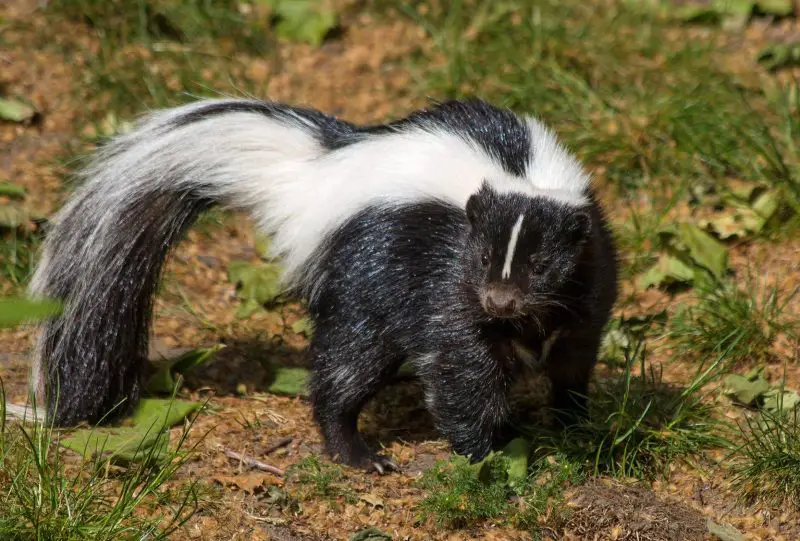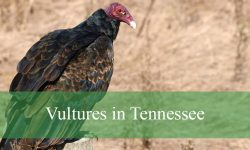Tennessee is a state rich in wildlife diversity, and among its many fascinating mammals, skunks hold a special place. Known for their striking black-and-white coats and their infamous defensive spray, skunks are often misunderstood creatures. In Tennessee, there are two distinct types of skunks: the Striped Skunk (Mephitis mephitis) and the Eastern Spotted Skunk (Spilogale putorius). While both species share certain characteristics, they also display unique differences in size, behavior, habitat, and identification.
For wildlife enthusiasts, naturalists, or even homeowners who encounter skunks in their backyards, understanding these animals is crucial. Their presence plays an important role in maintaining ecological balance, as they control insect and rodent populations. However, because skunks are nocturnal and secretive, many people rarely get a close look at them. This article will take a deep dive into the two types of skunks found in Tennessee, exploring their features, habits, and habitats with detailed explanations and identification tips.
Striped Skunk in Tennessee

Characteristics and Appearance
The striped skunk is the most recognizable and widespread skunk species in Tennessee. Its iconic black body with two bold white stripes running down the back makes it unmistakable. These stripes usually begin as a single white patch on the head, splitting into two as they move down the back, continuing to the tail. No two striped skunks are marked exactly alike, which means patterns can vary slightly between individuals.
In terms of size, striped skunks are medium-sized mammals, usually weighing between 6 to 14 pounds, with a body length ranging from 18 to 32 inches including the tail. Their bushy tail, often tipped with white, adds to their distinctive appearance. Males are typically larger than females, and during colder months, they may appear heavier due to stored fat reserves.
Their sharp claws are perfectly adapted for digging. These claws not only help them search for insects and grubs in the soil but also provide effective defense if threatened. Their fur is thick and glossy, offering insulation during Tennessee’s cold winters.
Behavior and Activity Patterns
Striped skunks are nocturnal animals, meaning they are most active during the night. They emerge after sunset to forage and spend the majority of their time searching for food. Their diet is highly varied and omnivorous, consisting of insects, grubs, small mammals, fruits, plants, and carrion. This adaptability makes them common across rural and suburban Tennessee.
When threatened, striped skunks display a unique defensive behavior. They may stomp their feet, raise their tail, and arch their back as a warning. If the threat persists, they spray a foul-smelling musk from glands located beneath their tail. This spray can reach up to 10 feet and is one of the most powerful deterrents in the animal kingdom. Despite this notorious defense mechanism, skunks do not spray indiscriminately, as producing musk requires time and energy.
Socially, striped skunks are generally solitary, except during the breeding season in late winter or early spring. Females give birth in May or June, typically to a litter of four to seven kits. The young stay with their mother for several months, learning survival skills before becoming independent.
Habitat and Distribution in Tennessee
Striped skunks thrive in a wide range of environments throughout Tennessee. They are commonly found in open fields, grasslands, forest edges, and farmlands. Human-altered landscapes, such as suburban neighborhoods and farms, also provide excellent foraging opportunities due to the availability of food sources like garbage, pet food, and crops.
In Tennessee’s rural regions, striped skunks often make their dens in abandoned burrows dug by groundhogs or foxes. In urban areas, they may find shelter beneath porches, decks, or woodpiles. They prefer locations with easy access to food and water, as well as protection from predators.
The striped skunk’s ability to adapt explains why it is seen across the entire state. From the Appalachian Mountains in the east to the fertile plains of western Tennessee, striped skunks occupy almost every corner of the region. Their abundance and visibility make them the most commonly encountered skunk species in Tennessee.
Eastern Spotted Skunk in Tennessee

Characteristics and Appearance
The eastern spotted skunk is less familiar to many residents of Tennessee because it is smaller, more secretive, and less common than the striped skunk. Unlike the bold stripes of its relative, the spotted skunk displays an intricate pattern of broken white spots and irregular stripes across its black fur. This unique appearance has earned it the nickname “civet cat” in some rural areas.
Spotted skunks are significantly smaller than striped skunks, weighing only 1 to 4 pounds and measuring 16 to 24 inches in total length, including the tail. Their slender bodies and shorter legs give them an agile and nimble build. The tail is bushy and often tipped with white, though the pattern may vary.
Their striking fur patterns not only serve as camouflage in woodland habitats but also make them visually distinct. Each individual’s markings differ slightly, making them an intriguing species for wildlife observers who manage to spot one.
Behavior and Activity Patterns
Eastern spotted skunks are highly nocturnal and far more elusive than their striped relatives. They are excellent climbers, often scaling trees, fences, and brush piles in search of food or safety. This arboreal ability sets them apart from striped skunks, which spend more time foraging on the ground.
Their diet, like that of the striped skunk, is omnivorous. They consume insects, small vertebrates, eggs, fruits, and plants. Because of their smaller size, spotted skunks rely heavily on insects such as beetles and crickets as a food source. They play an important ecological role by keeping insect populations under control.
One of the most fascinating behaviors of spotted skunks is their unique defensive posture. When threatened, they may perform a remarkable handstand by balancing on their front legs, raising their hindquarters and tail high in the air. This acrobatic display serves as a warning before spraying their defensive musk. Although they are capable of spraying like striped skunks, their handstand behavior is far more theatrical and memorable.
Habitat and Distribution in Tennessee
Eastern spotted skunks are much less common in Tennessee than striped skunks, and their populations have been in decline across much of the eastern United States. In Tennessee, they are usually found in forested areas, brushy fields, and farmlands with ample cover. They prefer habitats with dense vegetation, rocky outcrops, or fallen logs that provide shelter.
Unlike striped skunks, spotted skunks are more secretive and rarely venture into urban or suburban environments. They tend to avoid human activity, which makes sightings rare. Because they are smaller and more vulnerable to predators such as owls, foxes, and coyotes, they require dense cover to survive.
In Tennessee, spotted skunks are scattered across suitable habitats, but their numbers are noticeably lower compared to striped skunks. Conservation efforts are underway in some regions to better understand their population trends and habitat needs, as habitat loss and fragmentation have contributed to their decline.
Comparing the Two Skunk Species in Tennessee
While both striped skunks and eastern spotted skunks belong to the same family, Mephitidae, their differences are notable. Striped skunks are larger, more adaptable, and more commonly encountered across Tennessee. They thrive in both wild and urban settings and are highly recognizable due to their bold white stripes.
Eastern spotted skunks, on the other hand, are smaller, more agile, and more secretive. Their broken white markings and acrobatic defensive handstands set them apart. Unlike their striped relatives, they prefer secluded habitats and rarely approach human settlements.
Despite their differences, both species play a vital role in controlling insect and rodent populations. They contribute to Tennessee’s biodiversity and highlight the ecological importance of even the most misunderstood animals.
Fun Facts About Skunks in Tennessee
Skunks are often unfairly judged for their strong odor, but their biology and behavior reveal fascinating details. Both striped and spotted skunks are immune to snake venom from species like rattlesnakes, allowing them to prey on venomous snakes without harm. Their spray, while unpleasant, is also highly effective at deterring predators such as coyotes and bobcats.
During colder months, striped skunks may enter a state of torpor, reducing their activity but not fully hibernating. They may share dens with other skunks to conserve warmth, though they remain solitary during warmer months.
The spotted skunk’s handstand display is one of the most unusual defensive postures in the animal kingdom. This behavior, combined with their agility and smaller size, makes them especially intriguing to wildlife biologists.
Where to Spot Skunks in Tennessee
For those hoping to observe skunks in the wild, striped skunks are far easier to encounter. Rural fields, forest edges, and even suburban backyards often provide opportunities to see them at night. A slow drive along country roads after dark may reveal striped skunks foraging near ditches or fields.
Eastern spotted skunks require more patience and luck. They are best sought in wooded areas with dense underbrush, especially in rural parts of the state where human activity is minimal. Wildlife researchers often rely on camera traps to study these elusive animals due to their secretive behavior.
Conclusion
The two skunk species found in Tennessee—the striped skunk and the eastern spotted skunk—offer a fascinating glimpse into the state’s wildlife diversity. While the striped skunk is common and easily recognized, the spotted skunk is smaller, rarer, and more secretive. Together, they showcase the adaptability and uniqueness of the Mephitidae family.
Understanding their characteristics, behaviors, and habitats not only enhances appreciation for these animals but also underscores their ecological value. Far from being mere nuisances, skunks help regulate insect and rodent populations, contributing to a balanced environment. For nature lovers, the opportunity to observe either species in Tennessee provides an unforgettable wildlife experience.
FAQs about Skunks in Tennessee
What types of skunks live in Tennessee?
Tennessee is home to two types of skunks: the striped skunk and the eastern spotted skunk. The striped skunk is widespread and easily recognizable by its bold white stripes, while the spotted skunk is smaller, rarer, and marked with broken white spots and irregular stripes.
Are skunks dangerous to humans in Tennessee?
Skunks are not naturally aggressive and usually avoid human contact. Their main defense is spraying a foul-smelling musk when threatened. While unpleasant, it is not physically harmful. The greatest concern with skunks is their potential to carry rabies, so caution is advised when encountering them.
Where are striped skunks most commonly found in Tennessee?
Striped skunks thrive in a variety of habitats across Tennessee, including farmlands, open fields, forests, and suburban areas. They are highly adaptable and often den near human settlements where food sources like insects, garbage, and pet food are readily available.
Why are eastern spotted skunks rare in Tennessee?
Eastern spotted skunks are secretive and prefer dense cover in forests, brushy fields, and rocky areas. Their populations have declined due to habitat loss and fragmentation. Unlike striped skunks, they avoid urban environments, making sightings less frequent.
How can you tell the difference between striped and spotted skunks?
Striped skunks are larger, weighing up to 14 pounds, with two bold white stripes running down their back. Spotted skunks are smaller and more agile, with broken white spots and irregular patterns across their fur. Their defensive behavior also differs, as spotted skunks perform a handstand before spraying.
Do skunks hibernate in Tennessee?
Skunks in Tennessee do not fully hibernate but enter a state of torpor during the coldest months. They reduce their activity, spend more time in dens, and may group together to conserve heat, especially striped skunks.
What role do skunks play in Tennessee’s ecosystem?
Skunks are valuable for controlling insect and rodent populations. By feeding on beetles, grubs, small mammals, and even venomous snakes, they help maintain ecological balance in Tennessee’s landscapes.






